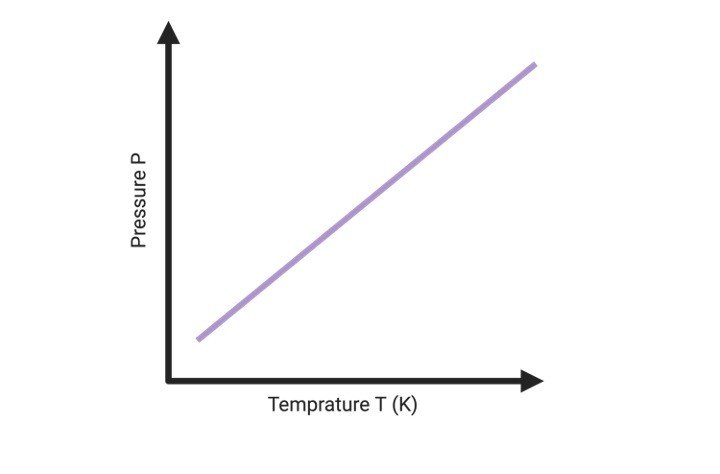What is Gay Lussac Law?
The law is named after a French chemist and physicist named Joseph Gay-Lussac. He articulated this law in 1808.
In simple words, Gay Lussac law or Amonton’s law states that the pressure exerted by a gas is directly proportional to the temperature of the gas when the mass is fixed and the volume is kept constant.
Gay Lussac Law Equation
The mathematical expression of the given law can be written as follows:
P ∝ T; P=kT
Thus, P/T = k
• P is defined as the pressure exerted by the gas on the walls of a container
• T is defined as the absolute temperature of the gas
• k is defined as a proportionality constant.
Gay Lussac Law Examples
The heating gas in a sealed vessel causes its pressure to rise, whereas cooling a gas lowers or reduces its pressure.
The happens because the increasing temperature imparts thermal kinetic energy to the given gas molecules.
As a result when the temperature increases, molecules present in the gas collide more often with the walls of the vessel.
These increased collisions are perceived as increased pressure.
Gay Lussac Law Graph
The association between the pressure and absolute temperature of a given mass of gas present at a constant volume can be demonstrated graphically as shown below;

From the above graph, it can be seen that the pressure of a gas that is taken at constant volume decreases with temperature as this pressure is directly proportional to the temperature.
Gay Lussac Law Formula and Derivation
Gay Lussac law indicates that the ratio of the initial pressure and temperature is always equivalent to the ratio of the final pressure and temperature for molecules of gas having fixed mass and is kept at a constant volume.
This formula can be written as given below:
(P1/T1) = (P2/T2)
• P1 is defined as the initial pressure
• T1 is defined as the initial temperature
• P2 is defined as the final pressure
• T2 is defined as the final temperature
This expression is formed from the pressure-temperature proportionality law of gas molecules.
Since,
P ∝ T for gases,
Thus,
P1/T1 = k
(initial pressure/ initial temperature = proportionality constant)
P2/T2 = k
(final pressure divided by final temperature = proportionality constant)
Consequently,
P1/T1 = P2/T2 = k
Or this can be written as,
P1T2 = P2T1
Gay Lussac Law Examples
Here are few examples of Gay Lussac law observed in our everyday life:
I. The Pressure
Automobile tire pressure drops on a cold day and climbs on a hot day. After driving, the air pressure present in a car’s tires goes up. This happens because the frictional force present between the tires and the road causes the air which is present inside the tires to heat up.
This air present in tires cannot expand further because the tires have a fixed-volume container, Thus, the pressure increases. The above example defines Gay Lussac law clearly.
II. Pressure Cooker
When heat is applied to a pressure cooker it increases the pressure inside the cooker. Thus, the Increasing pressure leads to an increase in the boiling point of water, as a result, it shortens the cooking time.
As the temperature of the liquid water rise, thus leading to the formation of water vapour (that is water present in its gas state). This vapour cannot escape the pressure cooker as it is a closed container, which means the volume is constant.
At the higher temperature which is the normal boiling point of water (100°C) food can be cooked sooner
III. Aerosol Can
It is generally advised not to store the aerosol cans under warm conditions or because by heating the aerosol can pressure of the contents increases eventually causing the can to burst.
When a pressurized aerosol can for instance a deodorant can or a spray-paint can is heated, the subsequent increase in the pressure applied by the gases on the walls of the container can result in an explosion.
This is the reason why several pressurized bottles or containers have cautioning labels stating that the purchased container must be kept away from fire and should be stored in a cool environment.
IV. Water Heater
An electric water heater is a lot similar to a pressure cooker. A pressure-relief valve present in the water heater prevents the steam formed from accumulating.
If the valve present in the heater fails to function due to one reason or the other then the heat drives up the steam pressure inside the heater, ultimately bursting it.
Gay Lussac Law Limitations
The limitations of Gay Lussac law are as follows:
The Gay Lussac law is only valid to ideal gases.
Gay Lussac law holds moral for real gases either at high temperatures or low pressure.
Gay Lussac Law Citations
Share












